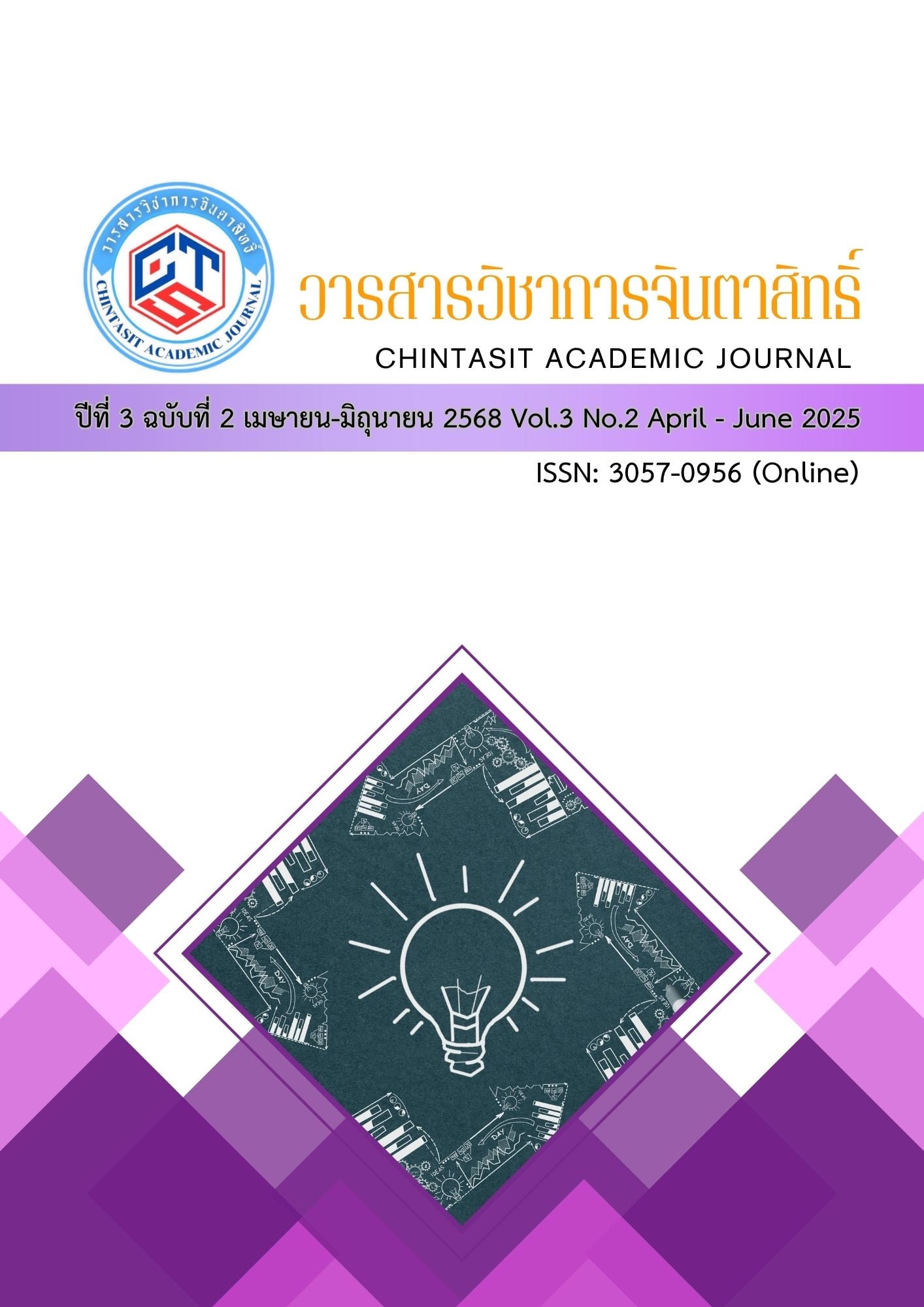BLENDED LEARNING AND FLEXIBLE LEARNING TOWARDS A NEW PARADIGM FOR THAI EDUCATION
Main Article Content
Abstract
This academic article aims to synthesize concepts, principles, and analyze the integrative relationship between Blended Learning and Flexible Learning to propose a conceptual framework and a new paradigm for Thai education in the digital era. This study is documentary research, comprehensively reviewing and analyzing relevant literature from both Thai and international scholars. The synthesis reveals that Flexible Learning is a broader educational philosophy aiming to liberate learning from the constraints of time, place, and method by empowering learners with choice and control over their learning trajectory (pace, place, path). Meanwhile, Blended Learning, the purposeful integration of face-to-face classroom instruction and online learning, stands as one of the most effective strategies and modalities for realizing the philosophy of flexible learning. This article analyzes their relationship through key frameworks such as the Community of Inquiry (CoI) and the SAMR Model, demonstrating how advanced blended designs can balance social, teaching, and cognitive presences, and transform learning from mere enhancement to redefinition. However, implementation in the Thai context faces structural and cultural challenges, including the digital divide, teacher competency, inflexible curriculum and assessment, and institutional culture. Policy and practical recommendations therefore focus on creating a comprehensive supportive learning ecosystem, developing teachers into "learning architects," and promoting a culture of lifelong learning to adapt to future changes.
Article Details

This work is licensed under a Creative Commons Attribution-NonCommercial-NoDerivatives 4.0 International License.
Chintasit Academic Journal is licensed under a Creative Commons Attribution-NonCommercial-NoDerivatives 4.0 International (CC BY-NC-ND 4.0) licence, unless otherwise stated. Please read our Policies page for more information on Open Access copyright and permissions.
References
ชัยยงค์ พรหมวงศ์. (2556). การทดสอบประสิทธิภาพสื่อหรือชุดการสอน. วารสารศิลปากร ศึกษาศาสตร์วิจัย, 5(1), 7-20.
ถนอมพร เลาหจรัสแสง. (2560). Designing e-Learning: หลักการออกแบบและการสร้าง e-Learning เพื่อการเรียนการสอน. ศูนย์นวัตกรรมการเรียนรู้ มหาวิทยาลัยเชียงใหม่.
ไพฑูรย์ สินลารัตน์. (2564). การศึกษาเชิงสร้างสรรค์และผลิตภาพ: กระบวนทัศน์ใหม่ในการศึกษาไทย. สำนักพิมพ์แห่งจุฬาลงกรณ์มหาวิทยาลัย.
วิจารณ์ พานิช. (2555). วิถีสร้างการเรียนรู้เพื่อศิษย์ในศตวรรษที่ 21. มูลนิธิสดศรี-สฤษดิ์วงศ์.
วิชัย วงษ์ใหญ่ และ มารุต พัฒผล. (2563). การออกแบบการเรียนรู้สู่สมรรถนะ. บัณฑิตวิทยาลัย มหาวิทยาลัยศรีนครินทรวิโรฒ.
สุรเชษฐ์ สันติมาลากุล. (2564). การจัดการเรียนการสอนแบบผสมผสานในยุคปกติใหม่. วารสารบริหารการศึกษา มหาวิทยาลัยศิลปากร, 12(1), 1-13.
Beatty, B. J. (2019). Hybrid-Flexible course design. Ed-Tech Books. https://edtechbooks.org/hyflex
Berge, Z. L., & Collins, M. P. (2000). Perceptions of barriers to teaching in distance education. The Quarterly Review of Distance Education, 1(1), 40-47.
Bergmann, J., & Sams, A. (2012). Flip your classroom: Reach every student in every class every day. International Society for Technology in Education.
Bonk, C. J., & Graham, C. R. (Eds.). (2012). The handbook of blended learning: Global perspectives, local designs. John Wiley & Sons.
Casey, D., & Wilson, P. (2005). A practical guide to providing flexible learning in further and higher education. Infolit.
Chickering, A. W., & Gamson, Z. F. (1987). Seven principles for good practice in undergraduate education. AAHE Bulletin, 39(7), 3-7.
Darling-Hammond, L. (2006). Assessing teacher education: The usefulness of multiple measures for assessing program outcomes. Journal of Teacher Education, 57(2), 120-138.
Garrison, D. R., & Vaughan, N. D. (2008). Blended learning in higher education: Framework, principles, and guidelines. John Wiley & Sons.
Garrison, D. R., Anderson, T., & Archer, W. (2000). Critical inquiry in a text-based environment: Computer conferencing in higher education. The Internet and Higher Education, 2(2-3), 87-105.
Graham, C. R., Henrie, C. R., & Gibbons, A. S. (2014). Developing models and theory for blended learning research. In Blended learning: Research perspectives (Vol. 2, pp. 13-33).
Horn, M. B., & Staker, H. (2015). Blended: Using disruptive innovation to improve schools. Jossey-Bass.
Knowles, M. S. (1975). Self-directed learning: A guide for learners and teachers. Cambridge Adult Education.
Laurillard, D. (2012). Teaching as a design science: Building pedagogical patterns for learning and technology. Routledge.
Moore, M. G. (1993). Theory of transactional distance. In D. Keegan (Ed.), Theoretical principles of distance education (pp. 22-38). Routledge.
Puentedura, R. R. (2006). Transformation, technology, and education. Hippasus.
Reimers, F. M., & Schleicher, A. (2020). A framework to guide an education response to the COVID-19 Pandemic of 2020. OECD.
Rose, D. H., & Meyer, A. (2002). Teaching every student in the digital age: Universal Design for Learning. Association for Supervision and Curriculum Development.
Ryan, R. M., & Deci, E. L. (2000). Self-determination theory and the facilitation of intrinsic motivation, social development, and well-being. American Psychologist, 55(1), 68-78.
Shurville, S., O’Grady, T., & May, H. (2008). Educational and institutional flexibility of Australian university websites. Campus-Wide Information Systems, 25(4), 271-285.
Siemens, G., & Downes, S. (2011). Connectivism and connective knowledge. Personal publication.
Vaughan, N. D., Cleveland-Innes, M., & Garrison, D. R. (2013). Teaching in blended learning environments: Creating and sustaining communities of inquiry. Athabasca University Press.


